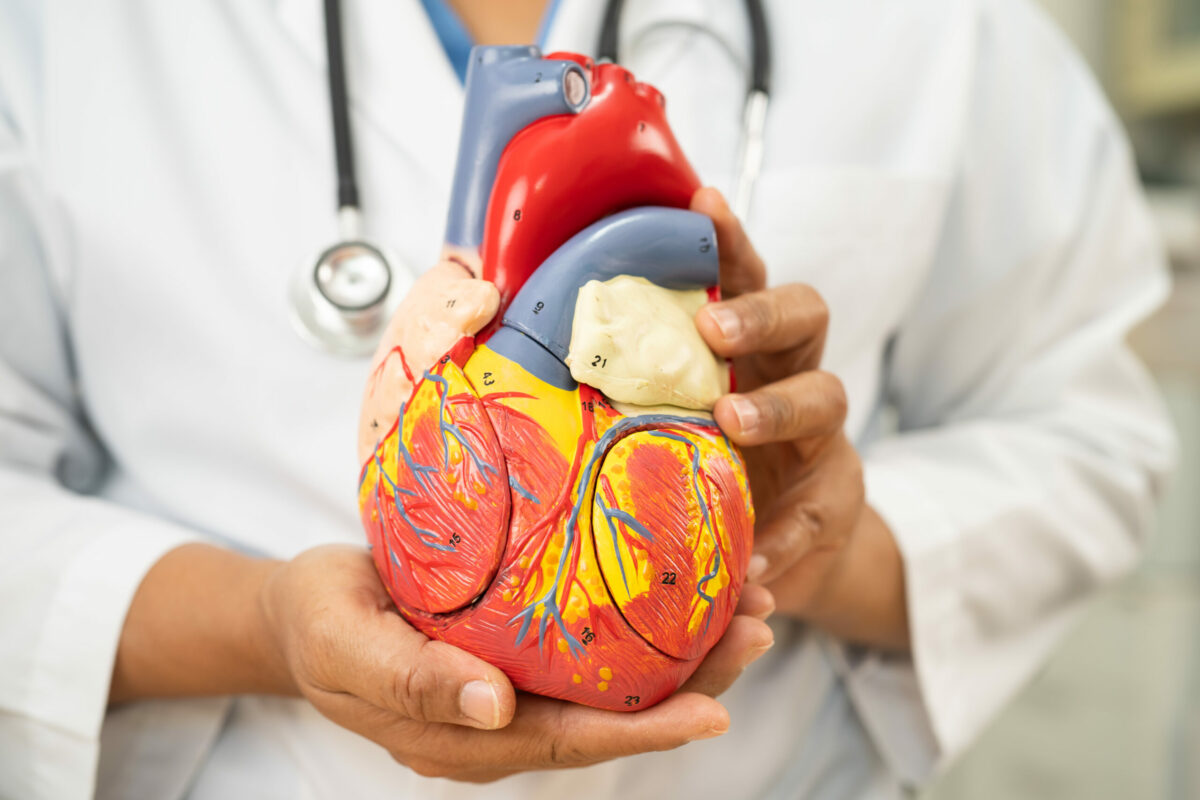This is a serious condition that causes the inner lining of the chambers of the heart and valves to become inflamed. These inner linings are called endocardium. Commonly, the condition occurs due to fungi, bacteria, or other germs that enter the bloodstream and attach to damaged regions in the heart. People with artificial heart valves, damaged heart valves, or other heart defects are more prone to develop endocarditis.
This condition is a medical emergency, which requires immediate treatment. Otherwise, it may lead to permanent damage to the heart valves. Healthcare professionals usually recommend medications and surgery to treat this condition.
Symptoms
The symptoms usually are different among people because it depends on the severity of the condition, how it develops slowly or suddenly, existing heart problems, and others. Check the most common endocarditis symptoms below:
- Joint and muscle aches
- Chest pain
- Fatigue (extreme tiredness)
- Flu-like symptoms (such as fever, chills, and others)
- Shortness of breath
- Night sweats
- Swelling in the legs, feet, or abdomen
- Murmur (a whooshing sound in the heart)
People with endocarditis may also experience other symptoms but less commonly. For example:
- Spleen tenderness
- Blood in the urine
- Unexplained weight loss
If you experience any of the previous symptoms, you should visit a doctor right away, especially if you have a congenital heart defect. Moreover, if the following symptoms occur it may indicate worsening of the infection. For example headaches, joint pain, shortness of breath, fever, and chills.
Causes
The primary cause of endocarditis is bacteria, fungi, or other germs that enter the bloodstream and negatively affect the heart valves. In most cases, the immune system destroys harmful bacteria that enter the bloodstream but sometimes, bacteria from the mouth, skin, throat, or intestines may cause endocarditis.
Risk Factors
There are multiple factors that may allow the bacteria to enter the bloodstream and cause endocarditis. While a diseased or damaged heart valve increases the risk of endocarditis, it may happen without heart valve problems. Check below some risk factors:
- Age – This condition occurs mostly in people over 60 years old.
- Artificial heart valves
- Damaged heart valves – Some health conditions (such as rheumatic fever or infection) may damage or scar either one or more valves of the heart, which increases the risk of infection.
- Congenital heart defects
- Implanted heart device – The infection of the heart’s lining may occur due to bacteria that attach to an implanted device.
- Illegal intravenous drug use – Endocarditis may occur in people who use dirty or contaminated needles or syringes.
- Poor dental health – People who do not brush and floss regularly may experience dental or gum problems. Therefore, the bacteria that grows in the mouth may enter the bloodstream through a cut on the gums.
- Long-term catheter use
Complications
Irregular growths made of bacteria or germs and cell pieces from a mass in the heart are called vegetations. These clumps occur in people with endocarditis. However, they can break and go to other body organs such as the brain, lungs, kidneys, and others. Check below some endocarditis complications:
- Pulmonary embolism (a blood clot in the lung artery)
- Enlarged spleen
- Kidney or heart valve damage
- Heart failure
- Stroke
- Abscesses that may develop in the heart, brain, lungs, or other body parts
How to Prevent Endocarditis?
Check below some steps that may help you prevent endocarditis:
- Do not hesitate to see a doctor if you experience endocarditis symptoms, especially if you have persistent fever, unexplained extreme fatigue, skin infections, and open cuts or sores that do not heal properly.
- Regularly brush and floss your teeth – The bacteria that causes endocarditis may enter the bloodstream from the mouth due to small gum cuts. Furthermore, good dental hygiene is essential for overall health.
- Never use illegal intravenous drugs because dirty needles or contaminated syringes may send the bacteria into the bloodstream increasing the risk of this condition.
Preventive Antibiotics
There are some dental and medical procedures that allow the bacteria to enter the bloodstream, which increases the risk of endocarditis. Therefore, physicians recommend certain antibiotics to prevent the condition. Commonly, you should take antibiotics in the following cases. For example:
- Medical history of endocarditis
- Have a mechanical heart valve or heart transplant
- Some types of congenital heart disease
Diagnosis
Healthcare providers usually perform a physical examination and ask some questions about medical history and symptoms to diagnose this condition. Sometimes, they may perform additional tests to exclude other health conditions that cause similar symptoms to endocarditis. Check some of them below:
- Blood culture test – This test is used to determine the germs or bacteria in the bloodstream.
- Complete blood count – This test helps doctors diagnose anemia (low red blood cell count) that may indicate endocarditis and other infections.
- Echocardiogram – This test uses sound waves to make pictures of the beating heart and how well the heart valves and chambers pump blood.
- Electrocardiogram (EKG or ECG) – This is a quick test that measures the electrical activity of the heart.
- Chest X-ray – This imaging test helps doctors diagnose a lung or heart condition and may identify whether the infection spreads to the lungs.
- CT (computerized tomography) or MRI (magnetic resonance imaging) scans – These imaging tests are performed if your doctor suspects the infection spreads to other body parts (such as the brain).
Treatment
While most endocarditis cases are treated with antibiotics, some people require surgery to repair the damaged heart valve.
Medicines
What antibiotic type you will receive depends on several factors including the cause of endocarditis, the severity of the condition, your age, and others.
Commonly, to treat endocarditis, high antibiotic doses are used. Moreover, some people receive the treatment in the hospital for a week or more. It is needed to see if the medicines work. People with endocarditis can leave the hospital when severe symptoms go away. Sometimes, your doctor may recommend to continue taking these antibiotics at home and regular checkups.
For people with endocarditis that is caused by a fungal infection, antifungal medications are recommended. Rarely, some people need to take antifungal medicines for the rest of their lives to prevent returning of the infection.
Surgery
Surgery to repair a damaged heart valve is usually recommended for people with recurrent endocarditis or if it is caused by a fungal infection. Your doctor may recommend either to repair or replace the heart valve. If you need to replace the heart valve, surgeons will use a mechanical or produced from cow, pig, or human heart tissue (also called a biological tissue valve).
Frequently Asked Questions
What is the most common cause of endocarditis?
This condition often occurs due to bacteria. However, it may happen due to fungi and other germs.
What are the most common symptoms of endocarditis?
These include:
- Swelling in the abdomen, legs, or feet
- Trouble breathing
- Night sweats
- Flu-like symptoms (such as chills)
- Extreme tiredness
- Chest pain (angina)
- Muscle and joint aches
If any of the previous symptoms occur, it is advised to see a doctor for diagnosis and proper treatment.
What are the possible complications of endocarditis?
These include:
- Sepsis
- Mycotic aneurysm
- Metastatic abscess
- Pulmonary embolism
- Meningitis
- Acute kidney injury
- Paralysis
- Heart failure
- Stroke
However, you can consult with your doctor about ways to reduce the risk of endocarditis complications. Ask your healthcare professional if you have additional questions.




